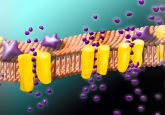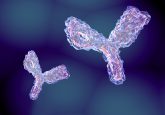Serum neurofilament could become a new biomarker for frontotemporal dementia

Research, published in the Journal of Neurology, reports that scientists based at the University of Eastern Finland (Finland) and the University of Oulu (Finland) have identified serum neurofilament as a protein that could be used as a new biomarker to discriminate between frontotemporal dementia and some psychiatric disorders.
Frontotemporal dementia is the second most common progressive form of neurodegenerative memory disorder affecting the working age population, however, early symptoms are often confused with symptoms that occur in psychiatric disorders.
Early symptoms of frontotemporal dementia most commonly include changes in personality, behavior and social interaction, such symptoms are commonly associated with psychiatric disorders. A differential diagnosis is challenging and misdiagnoses can be left unnoticed for years.
Currently, frontotemporal dementia lacks a single accurate and cost-effective diagnostic technique. Typically, diagnoses consist of neuropsychological tests, MRI scans of the brain, cerebrospinal fluid analysis and may only be confirmed following an extended period of observation.
In this research, scientists focused on the analysis of serum neurofilament profiles. Neurofilament – a protein released from neurons following damage to the central nervous system – is known to be elevated following acute brain damage. In this study, researchers compared serum neurofilament profiles from patients with frontotemporal dementia and those with psychiatric disorders.
The team used a single molecule array platform – also known as Simoa – to analyse serum neurofilament profiles. This technology, a form of digital ELISA, offers up to a 1000-fold improvement in sensitivity over a conventional ELISA. It was discovered that patients with frontotemporal dementia had significantly higher serum neurofilament levels than patients with psychiatric disorders.
According to the researchers, neurofilament is an excellent and promising tool for aiding the differential diagnosis between psychiatric disorders and frontotemporal dementia, with the study also reporting that higher levels are linked with more severe forms of the disease.
Eino Solje, Lead Investigator (University of Eastern Finland) explained:
“I think that neurofilament measurements from blood samples may provide a practical tool differentiating specific neurological disorders from primary psychiatric disorders. However, studies in other neurodegenerative disease cohorts are needed to confirm the results obtained in our study.”
On future research, Eino Solje concluded:
“We will aim to better understand the pathogenetic mechanisms of frontotemporal dementia. We are particularly interested in alterations of the immune system function e.g. potential microglial dysfunction. In addition, we will concentrate on the research of early diagnostics, including clinical aspects, biomarker studies and neuroimaging.”
Sources: Katisko K, Cajanus A, Jääskeläinen O et al. Serum neurofilament light chain is a discriminative biomarker between frontotemporal lobar degeneration and primary psychiatric disorders. J. Neurol. doi:10.1007/s00415-019-09567-8 (2019)(Epub ahead of print); www.eurekalert.org/pub_releases/2019-10/uoef-sni101019.php





